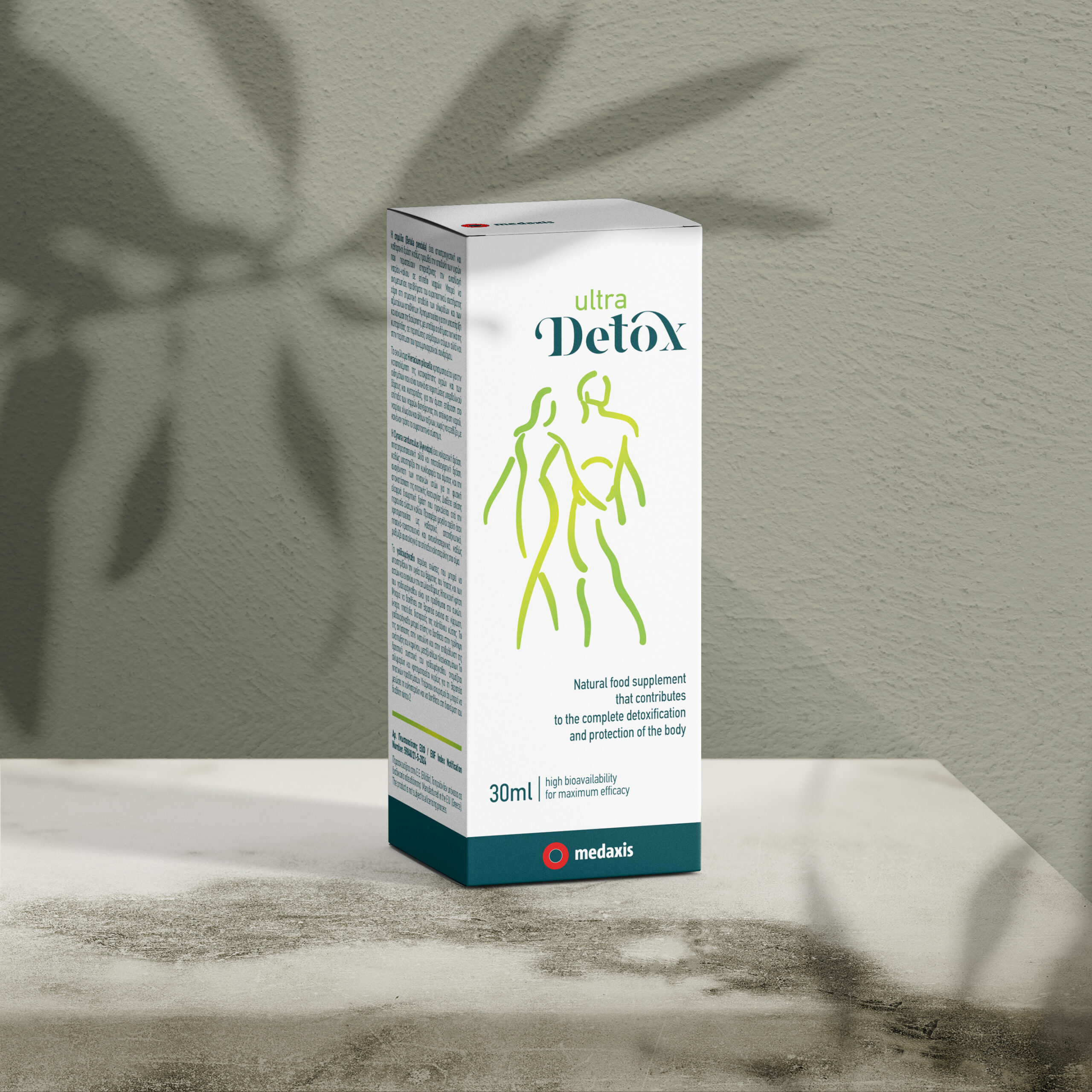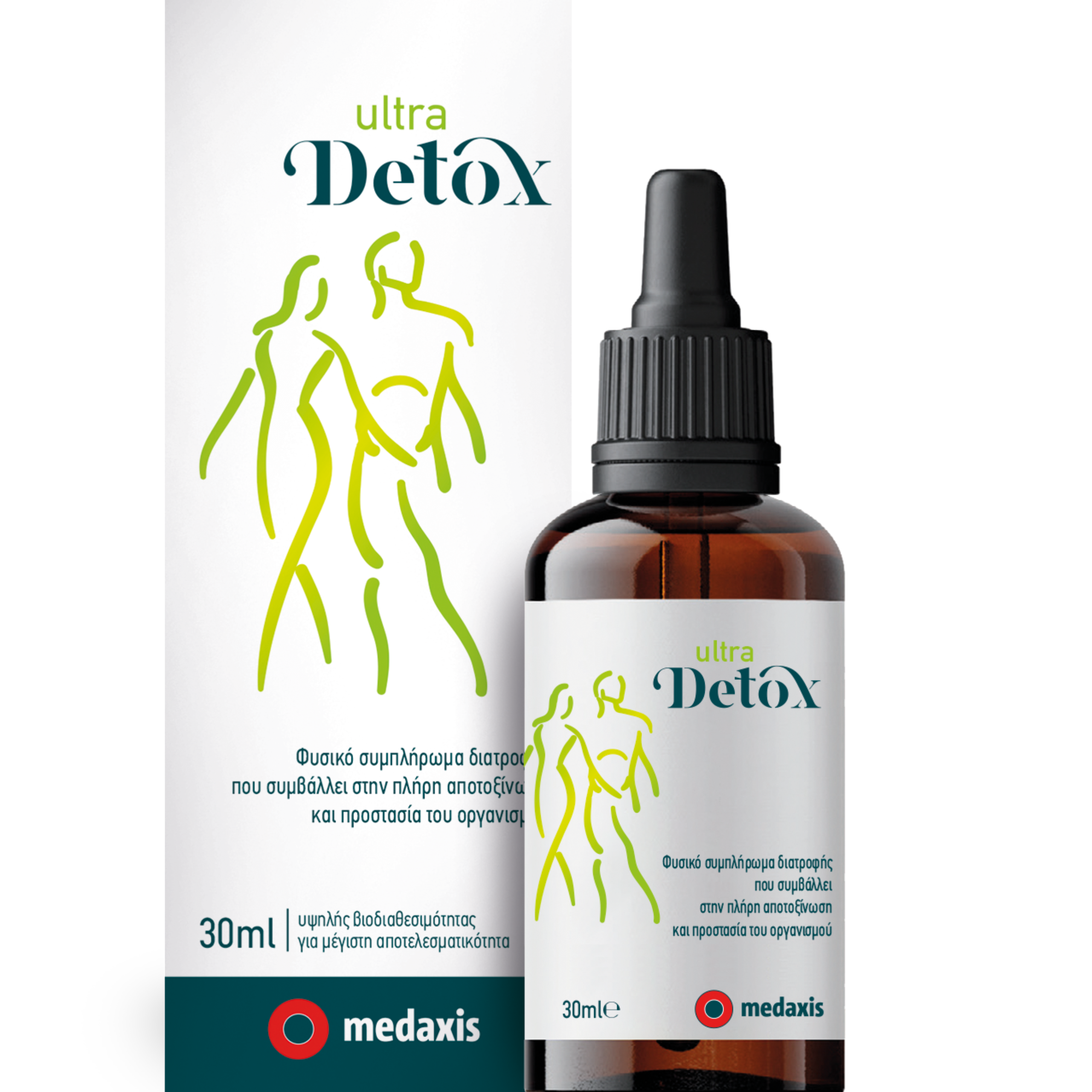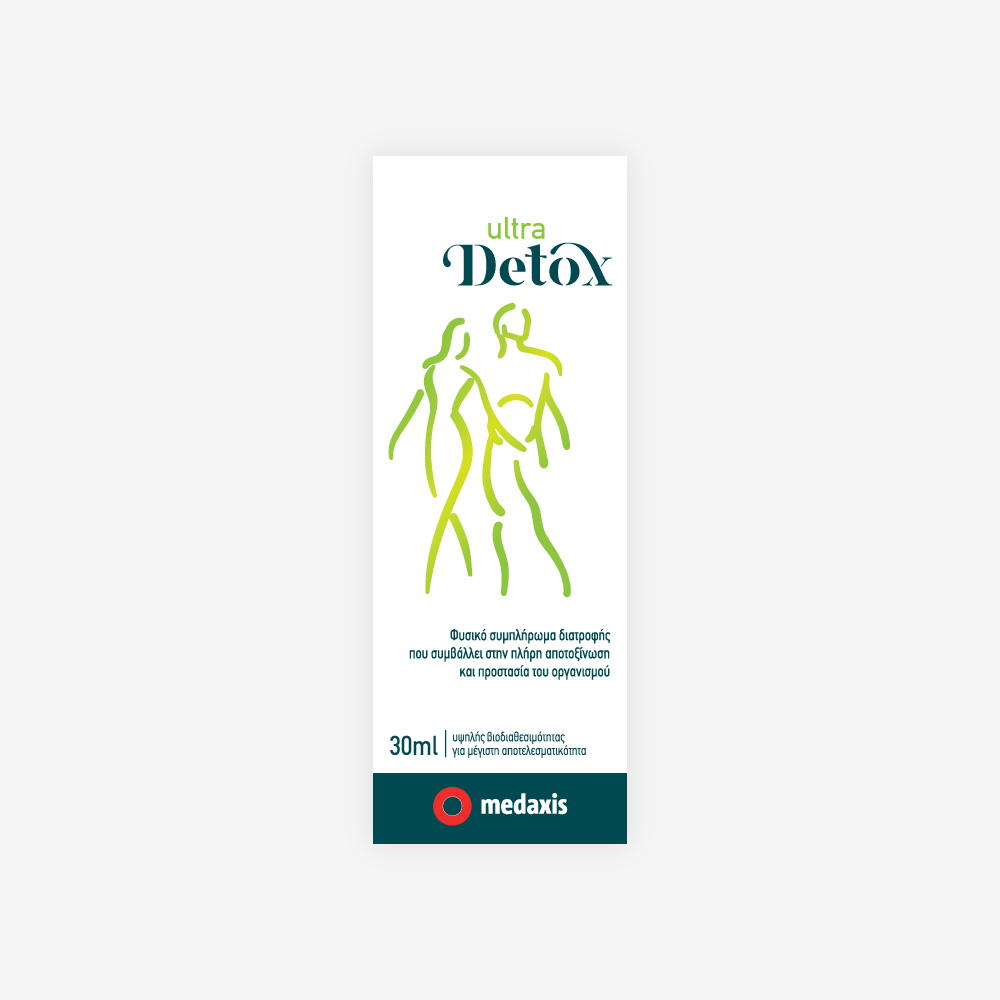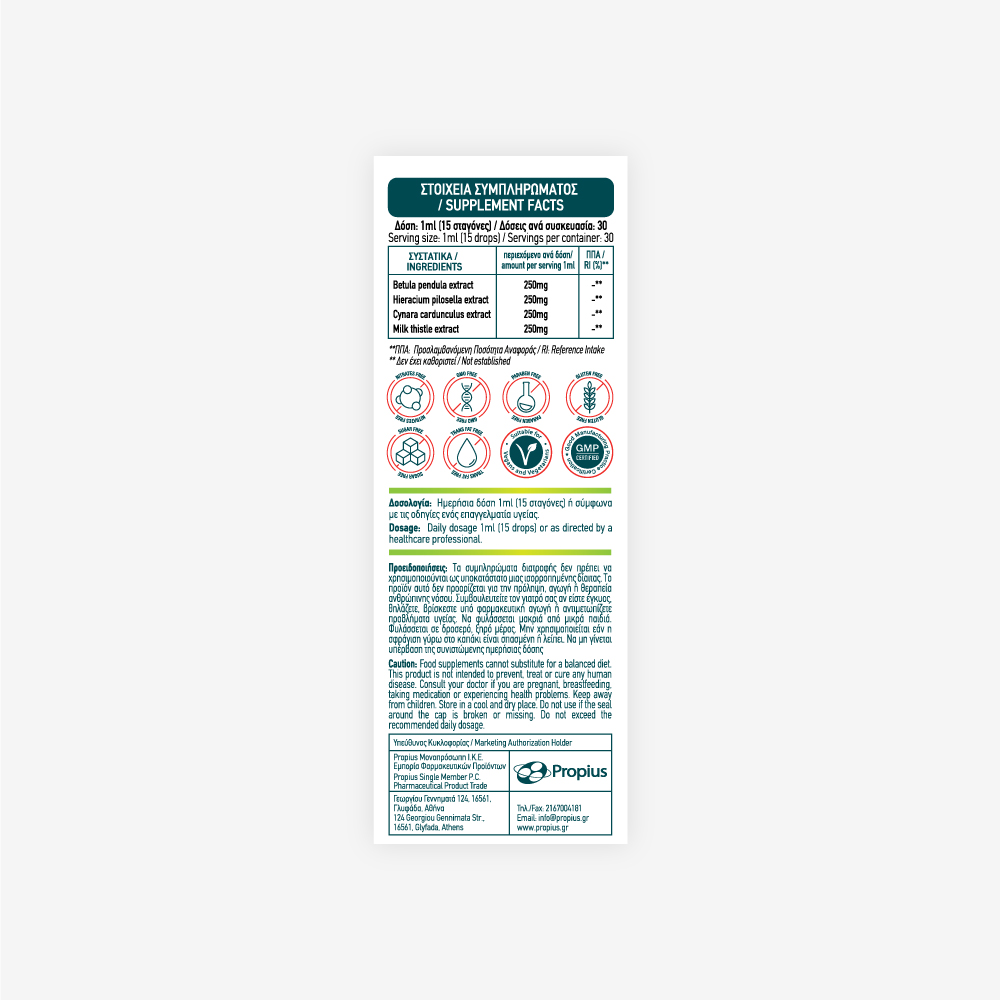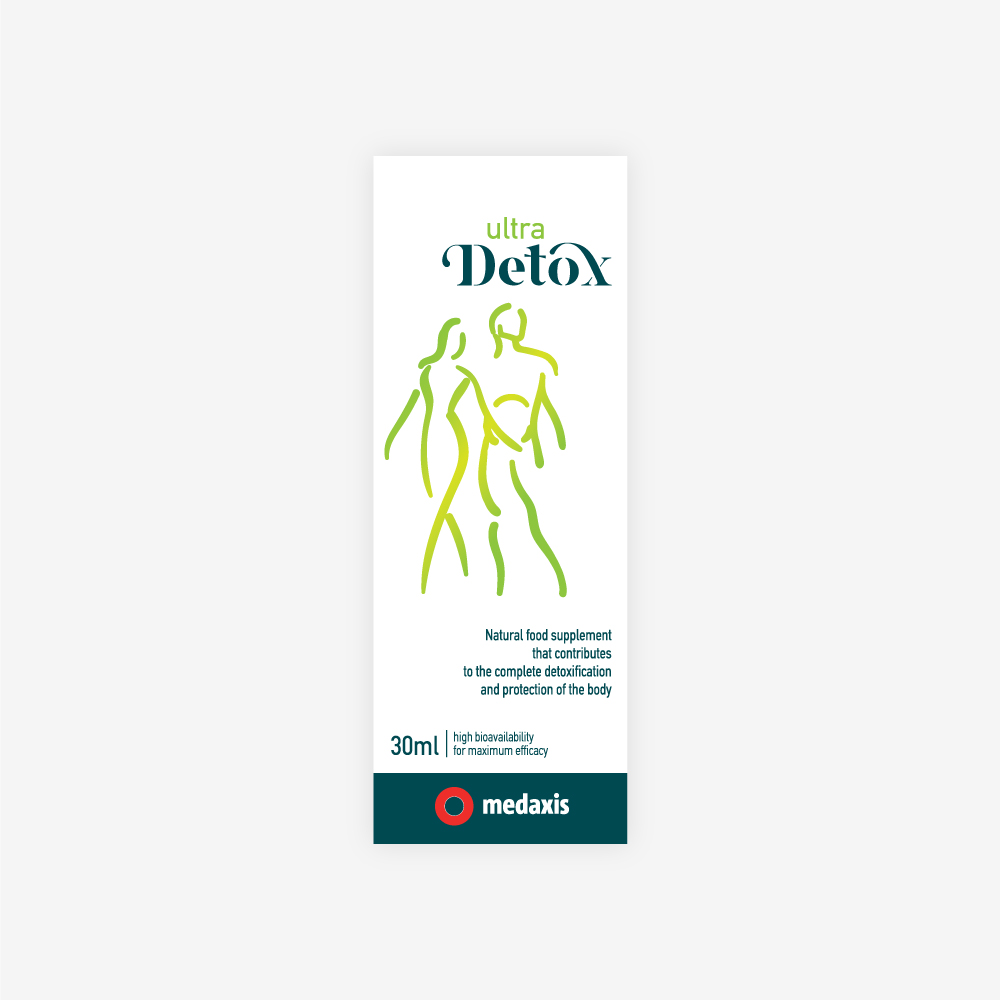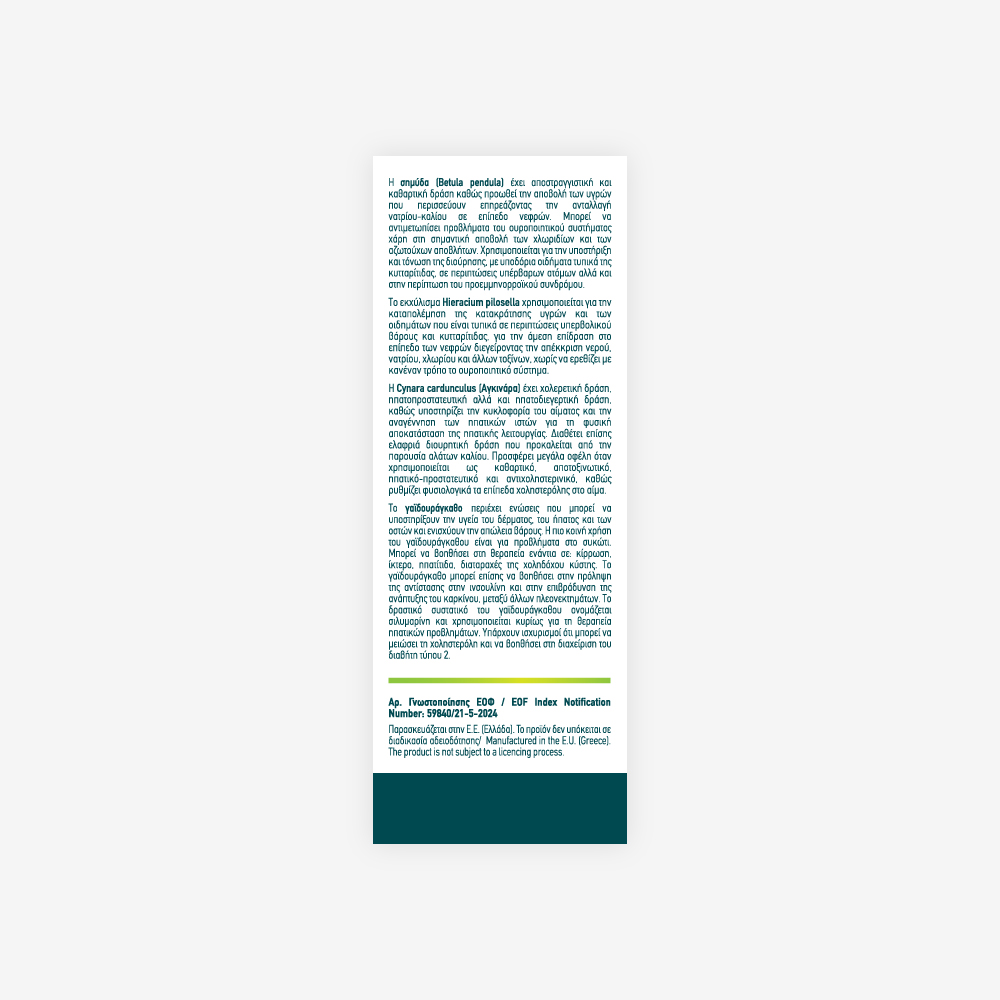Ultra Detox
Where do “glues” come from?
Glues have no definite form, as they are soft, viscous, sticky, elastic, rounded substances and can be more or less thick. Although they are not aggressive to body tissues, their mass and thickness can hinder the circulation of various liquids in the body (blood, lymph, intra or extra cellular liquid), or even block blood vessels. There are also glues that can obstruct the respiratory tract, such as sputum, mucus and phlegm, which can be removed by blowing one’s nose. These glues are substances of lipidic origin, which means that they are due to fats (cholesterol, saturated fats), and of glucidic origin due to the residues of badly digested starch. They are also made up of dead cells (from cell renewal) and bacterial corpses (bacteria neutralised by the immune system).
What about “crystals”?
Unlike glues, crystals have a structured form. They are aggressive and irritating to tissues, as they have a sharp and hard character. This can cause injury and inflammation (as in “gout” with its sodium urate crystals). An injury can be caused, when their contact is prolonged. They are also present in the joints, which can also pile up, inflame them and then block them. The transformation of proteins (uric acid, urea, creatinine, oxalic acid), fats (acetylacetic acid, etc.) and sugars (pyruvic acid, lactic acid), as well as used minerals (phosphorus, sulphur, chlorine, etc.) cause the composition of the crystals, which are largely of protein origin. The waste in the body is classified into glues or crystals according to their size and their solubility or not in the liquid. Glues, because of their size, cannot pass through many of the membranes that make up tissues, whereas crystals, being much smaller, can.
Crystals are soluble in a liquid, whereas glues are not because of their gelatinous constitution.
THE 5 ORGANS THAT ELIMINATE TOXINS
The 5 organs in charge of the elimination of toxins are also called organs of detox, or emunctory, or filter organs including the liver, intestines, lungs, kidneys and skin. These are the organs that take care of the evacuation of glues and crystals from the body. They first filter them from the blood that passes through them and then transform them via specific enzymes, and then evacuate them from the organism; hence the name “exit doors” of the body.
Each emunctory is capable of eliminating and treating one or the other of the 2 wastes, except for the skin, which is specialised in treating both.
There are therefore specific glue emunctories: the liver, the intestines and the lungs.
Specific crystal emunctories: the kidneys and a mixed emunctory (glues and crystals): the skin.
Each organ of the detox can be boosted during the cleansing work. This can be done with drainage tools, such as plants, vegetables and fruits with detoxifying properties, as well as sauna, baths, enemas, heat, massage, movement, etc. The drainage tool should be chosen according to the type of waste to be cleansed (glues or crystals), the state of the organ that can eliminate the type of waste in question, and the level of vitality.
The 3 specific organs for the elimination of glues: the liver, the intestines and the lungs.
The liver is an organ located in the upper part of the abdominal cavity, under the diaphragm and protected by the rib cage. It is possible to touch only a small part of its lower part. It is irrigated by 2 blood vessels. Oxygen-rich blood is brought to it by an artery which comes from the aorta, and a vein, the portal vein, brings it blood rich in nutrients removed from the food bolus in the intestines. Once all this blood comes into contact with each of the liver’s cells, it will proceed to remove nutrients, but also to purify the waste it has.
The role of the liver in the purification of blood:
The liver kills microbes and viruses and neutralizes their toxins. It deactivates toxic materials that have been consumed (food additives, pesticides, drugs, etc.) It removes dead cells, worn-out minerals, bacterial corpses, cholesterol, etc. from the blood. It is a cleansing organ. The liver expels glues thanks to the presence of the bubble, and is therefore specialised in eliminating glues. The bile ducts collect this bile and store it in the gallbladder, which empties it into the duodenum (upper part of the small intestine) during mealtimes. The intestinal emunctory will take over from these glues afterwards.
Intestines
The intestines are about 7m long, consisting of the small intestine and the colon. The small intestine takes care of the absorption of food nutrients, once digested from the stomach. The nutrients (amino acids, fatty acids, vitamins, sugars, minerals, etc.) arrive in the liver through the portal vein, crossing the intestinal mucosa. Once transformed, the liver releases them into the bloodstream for distribution to the rest of the body. It should be noted that under normal circumstances, the intestinal mucosa selects and leaves only well-digested molecules in the blood. Toxic residues and large, poorly broken down particles are evacuated with the faeces. However, it is possible that this mucous membrane can change and become permeable. And this permeability is a major factor in body fouling. Permeability can be caused by food intolerance, inadequate nutrition, chemicals, medicines, stress, etc., basically anything that can cause digestive inflammation. The final processing of materials takes place in the colon. The local bacteria mainly attack the dietary fibres and the collected nutrients reach the liver via the portal vein. The rest, i.e. the unusable or undigested residues, become the faecal substances that will leave the body. It should be noted that constipation is also a cause of organic fouling because the particles are reabsorbed and join the bloodstream to the liver. In order to avoid a large intestinal reabsorption of toxins, the factors that cause constipation must be addressed. A well-functioning intestine empties 1-2 times a day. If the bowels only empty once every 2 to 3 days, this is a sign of constipation (poor bowel movement).
The lungs help the body to breathe. Air is drawn into the lungs through the alveoli and passes through them back into the bloodstream. Carbon dioxide and other volatile waste products go the opposite way out of the body when exhaled.
The role of the lungs is therefore to purify waste gases, mainly carbon dioxide.
The lungs have cilia in their mucous membrane and this prevents the intrusion of dust during inspiration. They also exclude semi-solid waste such as mucus and sputum, which are also glues caused by eating too much fat, too much sugar, starch (bread, pasta, cereals, etc.) and above all too much. To facilitate oxygenation, the evacuation of carbon dioxide as well as the glues, it is necessary to do physical exercise.
The particular emunctory for eliminating crystals: the kidneys.
The human body has two kidneys. They are located on either side of the spine below the last ribs. The kidneys filter the blood and make up the urine after filtration. And the urine consists of 95% water out of 1.5l per day. The rest is waste crystals, i.e. urea, uric acid, creatinine, mineral salts, etc. After the bladder is formed, it stores the urine until it is expelled during urination. If the body lacks hydration, the rate of urination is too low, and this will cause pain when crystals are expelled. This can cause irritation or even injury to the lining of the urinary system. And may even form stones. A little clarification regarding stones: kidney stones are mainly made up of waste crystals, whereas gallstones are made up of glues. It should also be noted that blood filtration by the kidneys depends on the blood pressure mechanism. Filtration is ideal when the blood pressure is normal. If there is a drop in blood pressure, filtration is weakened and causes water retention and oedema due to the lack of expulsion of absorbed water. And if there is a rise in blood pressure, there is an abundance of urine output.
The only mixed emunctory: the skin
The skin is one of the most important organs in the human body. In an adult, the skin represents 1.8 m2 and weighs 4.5 kg. It consists of 3 layers: the epidermis, the dermis and the hypodermis, the deepest layer. The epidermis is the part that protects the skin. Skin renewal and repair of lesions takes place in the deep layer, the basal layer. The removal of adhesives via sebum with the help of the sebaceous glands takes place in the dermis, which is the seat of mixed purification activity. The sweat glands are also specifically designed to remove crystals via sweat. Sebum is made up of fatty substances and proteinaceous substances which come from the regeneration of the sebaceous glands themselves. And sweat is a mixture of water, sodium chloride, nitrogenous waste (urea, uric acid) comparable with diluted urine. The hypodermis is the deepest layer of the skin. It consists largely of fat cells.
They store fat for use. They can also accumulate waste products that mix with this fat, giving rise to cellulite. While the liver, intestine, lungs and sebaceous glands are responsible for eliminating the glue, the kidneys and sweat glands in the skin are responsible for removing the crystals.
Ultra Detox Formula
1. Betula (Birch) 250mg
2. Hieracium (Pilosella) 250mg
3. Cynara cardunculus Αγκινάρα) 250mg
4. Milk thistle 250mg
1. Birch – Drain Body Liquids
It contains:
• Betulin (up to 14%) resin also known as birch camphor.
• Xylitol, also known as birch sugar, a non-cariogenic carbohydrate.
• Betuloside (heteroside substance), pro-vitamin A, vitamin C.
• Phytosterin, pentosans, saponins, tannins, enzymes.
• Minerals: calcium, potassium, magnesium, copper, iron, zinc.
It is a powerful depurative, the initial act of the restoration of health, a DETOX to be carried out at each change of season. Besides the birch is nicknamed the tree of wisdom.
The actions of birch on the body
• Diuretic, stimulating urinary excretion.
• Laxative, accelerates intestinal transit.
• Cholagogue, facilitates liver function.
• Expectorant, to thin bronchial mucus.
BIRCH (Betula pendula)
Birch dry extract titrated in hyperoside at 0,3%
Shrub from the Betulaceae family and original of Central Europe, Canada, Asia, with a typical white bark.
Parts used: The drug is made by its leaves, bark, young branches and buds. The fundamental principles include: tannins, saponins, vitamin C, flavonoids (betulin and hyperoside with diuretic and depurative properties), miricetin, nicotinic acid.
Properties: Birch features draining and depurative action as it promotes the expulsion of liquids in excess by affecting the sodium-potassium exchange on a kidney level. It can contrast urinary tract troubles thanks to the major elimination of chlorides and nitrogeneous waste.
Indications: Used to support and stimulate diuresis, with subcutaneous edemas typical of cellulite, overweight and premenstrual syndrome.
2. Hieracium – Reduce Liquid Retention
The pilosella is a plant known for its diuretic properties, and is considered a precious remedy for draining and purifying the body. Among the diuretic herbal teas, it is recommended to treat swelling of the legs and ankles and as a useful infusion to counteract water retention and cellulite. As a rule, the aerial parts of the plant are used for the infusion of pilosella, the herb in herbal tea cut.
Pilosella: properties and benefits
The pilosella shows different diuretic and draining characteristics, thanks to the presence of flavonoids. These are antioxidants that make pilosella grass an excellent treatment in case of water retention, swelling of the lower limbs and the onset of lympho-vascular edema. The draining effect is also excellent for fighting cellulite, improving outflow of liquids and toxins, and stimulating lymphatic and blood circulation. Among the diuretic herbal teas, that of pilosella herb considerably increases the volume of the excreted urine. In this way, it promotes the purification of the organism, freeing it from toxins and the effects of a diet that is too loaded with animal fats and proteins. This effect is beneficial, in fact, in case of hypertension and high azotemia. The pilosella favors the purification of the blood, and for this reason it is used by those who want to help the treatment of uric stones. It can also facilitate the work of the liver, stimulating the secretion of bile and its outflow with a cholagogue action. Because of this, the detox properties of pilosella herb are extensive, also affecting the liver. Its purifying and contrasting properties against the proliferation of bacteria are important in case of inflammation of the urinary tract. Its antimicrobial activity due to polyphenolic compounds, in fact, is beneficial in case of cystitis, urethritis and irritation of the genitourinary tract.
This property on the urinary tract is due to a hydroxycoumarin substance, umbelliferone, and to some flavonoids and triterpenes that help the body react when attacked by bacteria that cause urinary tract infections and inflammation. The pilosella performs a protection for the mucosa of the bladder and a support for the repair of the urinary tract tissues, in addition to the fact that pathogens are expelled easily thanks to its diuretic action. The plant also has spasmolytic effects, to calm abdominal pain, and diaphoretic – it increases sweating, favoring the elimination of toxins. The aerial part of the pilosella is also historically considered beneficial in the treatment of respiratory problems such as asthma, bronchitis, cough and whooping cough. It relaxes the muscles of the bronchi, calms the cough and reduces the production of phlegm. In the past it was also used as a natural anti-inflammatory for rheumatism. The presence of astringent tannins helps the tissues in the healing of internal and external injuries. These compounds, in fact, have the ability to bind collagen fibers to the skin, giving them better resistance to heat and abrasion. For this reason, the pilosella also has a calming and astringent function on the skin which can be useful externally in case of acne and skin irritations.
Origins and History of cultivation
Pilosella, known botanically as Hieracium pilosella, is a species of flowering plant native to Europe, Western Asia and Northern Asia. It is called pilosella or pilosetta, because the whole plant, except the flowering parts, is covered with white bristles (down) – sometimes reddish when they grow on the stems. Its name, in fact, refers to the term pilus, which in Latin means hairy. Although it is now widely used in herbal treatments, in many parts of Europe it has traditionally been used as a medicine. It was known for its ability to combat lung diseases, asthma, coughing states and bronchial congestion. Even today, pilosella grass is collected and used by herbalists for its medicinal properties, which have proved to be more of a diuretic and draining. A curiosity: the Latin botanical name hieracium derives from hierax which means sparrow hawk. In fact, according to popular legend, this bird of prey makes its eyesight sharper by feeding on this plant. Other popular names are mouse ear grass, molinara grass, or cat’s tongue due to the shape of the leaves.
Nutritional values of pilosella
The active components of the herb in the herbal tea cut of the plant, most useful for our well-being are the flavonoids, the umbelliferone molecule (a compound similar to coumarin), phytosterols and triterpenoids. In addition, the pilosella contains tannins, resins and mucilages.
How to use the leaves of the pilosella in the herbal tea
The infusion of pilosella is obtained by inserting in a cup (250 ml), about 3-5 grams of the herbal tea cut, with water at 100 ° C. Leave to infuse for 5-8 minutes, before drinking the herbal tea. Add honey or sugar if desired.
Pilosella: side effects and contraindications
Usually the extracts of this plant are tolerated without major side effects. In some cases, however, sensitivity reactions may occur which may include skin reactions. Among the side effects related to the intake of pilosella, there is the possible reduction of blood pressure up to hypotension, with phenomena of weakness, dizziness, tachycardia and breathlessness. Having properties that act on the digestive system and the genitourinary tract, pilosella can cause diarrhea. It is good to respect the recommended doses. Do not use pilosella during pregnancy and breastfeeding.
PILOSELLA (Hieracium pilosella)
Pilosella dry extract titrated in vitexin at 0,5%
A small mountain herbaceous plant, growing in Europe, western Asia, northern Africa, part of the Asteraceae family. It is rich in mucilage, polyphenols, flavonoids, tannins, hydroxicoumarin; umbelliferone, coumarin, triterpenoid saponins, resins, essential oil, caffeic acid, chlorongenic acid.
Properties: Flavonoids can stimulate diuresis, elimination of sodium and chloride. This plant is famous in the literature for its diuretic, draining and depurative action combined to antiseptic and anti-inflammation activities of the urinary tracts.
Indications: Pilosella extract is therefore used to fight liquid retention and edemas typical of overweight and cellulite for its direct effect on a kidney level stimulating the excretion of water, sodium, chlorine and other impurities, without irritating the urinary tracts in any way.
3. Cynara cardunculus
Artichokes are packed with powerful nutrients.
Vitamins | Minerals |
Thiamine B1 | Magnesium |
Riboflavin B2 | Calcium |
Niacin B3 | Phosphorus |
Vitamin C | Potassium |
Vitamin K | Zinc |
Vitamin B6 | Copper |
Folate | Sodium |
The real magic of Artichoke lies in its bioactive compounds. Some of its unique compounds can improve many functions in the body related to overall health. Artichoke is rich in polyphenolic compounds that have important antioxidant properties.
Chlorogenic Acid | Phenolic acids |
Luteolin | Caffeoylquinic acids |
Epigenin | Caffeic acid |
Cynarin | Flavonoids |
Antioxidant activity was associated with the content of polyphenolic compounds, the higher they were, the better the antioxidant performance artichoke possessed.
Health Benefits of Artichoke
1. Aids in Liver Protection and Detox
This plant has liver-detoxifying properties, mostly because of the active ingredients it contains.
There are four main underlying mechanisms of Artichoke’s liver-supportive effects:
• Stimulation of bile in the Liver
• Hepatoprotective (antioxidant) properties
• Hypocholesterolemic (cholesterol-lowering) properties
• Antihepatotoxic (Liver detoxifying) properties
In fact, Luteolin and Quercetin can reduce high blood cholesterol levels, through the inhibition of intestinal cholesterol absorption. (4)
Increased Bile Flow
Besides this cholesterol-lowering effect, Artichoke has been found to increase bile flow in the liver. This is a fluid produced by the liver, crucial for breaking down fats and fat-soluble vitamin absorption.
The artichoke was found to significantly increase bile flow in the liver, in Wistar rats at dosages of 400 mg/kg, after both single and repeated administration.
Liver protection
Liquid extracts made from Artichoke roots and leaves helped with liver support, protection, and even liver cell regeneration in animal studies. Research data supports artichoke hepatoprotective and cholesterol-lowering effects.
• Artichokes may protect your liver due to their hepatoprotective properties. It contains Luteolin – which may lower cholesterol and inhibit cholesterol biosynthesis.
• Polyphenolic acids and flavonoids in Artichokes possess strong antioxidant properties which were shown to enhance liver health and reduce the level of liver enzymes associated with liver damage, such as ALT and AST.
Cholesterol-lowering effect
The Liquid extracts made from Artichoke roots and leaves may help with liver support, protection, and even liver cell regeneration. Research data supports artichoke hepatoprotective and cholesterol-lowering effects.
Artichoke may exert synergistic effects along with lipid-lowering therapy, which can assist in the reduction of LDL cholesterol and triglyceride levels.
Cynara additionally,
• May Reduce Blood Pressure
• May Improve Brain Function
• Promotes Clear Skin
• Improves Digestion
• Prevents constipation, Increases Bowel Movement
• May Improve Heart Health
• Has Potential Anti-Cancer properties
• Aids in Diabetes Management
ARTICHOKE (Cynara scolymus)
Artichoke dry extract titrated in chlorogenic acid at 1%
Herbaceous plant part of the Asteraceae family, original of the Mediterranean area and then spread to the rest of the world. Its health molecules featuring a strong action especially on liver, are: polyphenols, cynarine, cynaropicrin, chlorogenic acid, caffeoylquinic acids, dicaffeoylquinic acids, flavonoids, potassium, magnesium, calcium.
Properties: artichoke features a choleretic, hepatic-protective and hepatic-stimulating action, as it supports blood circulation and regeneration of liver tissues for natural restoring of the hepatic functionality. It also features a light diuretic effect caused by the presence of potassium salts.
Indications: it offers great benefits when used as depurative, detoxifier, hepatic-protector and hypocholesterolizer, as it physiologically regulates the levels of cholesterol in blood.
4.
https://www.medicalnewstoday.com/articles/320362#how-to-use
What are the benefits of milk thistle?
Milk thistle contains compounds that may support skin, liver, and bone health and enhance weight loss. Milk thistle might also help prevent insulin resistance and slow the growth of cancer, among other benefits.
Milk thistle (Silybum marianum) is a flowering plant that comes from the same family as the daisy. Also known as Mary thistle or holy thistle, milk thistle grows in Mediterranean countries and people use it to make natural remedies.
The active ingredient in milk thistle is called silymarin. Doctors mainly use the plant to treat liver problems, but some people claim it can lower cholesterol and help manage type 2 diabetes.
This article explores potential milk thistle benefits and examines whether there is any scientific evidence to support its use. It also looks at how to use milk thistle and whether there are any risks to consider.
Benefits of milk thistle
A person may use different parts of the milk thistle plant to treat various health conditions. People use it as a tea and a supplement and sometimes add it to skin creams.
The most common use of milk thistle is for liver problems. Some people claim it can help to treat:
• cirrhosis
• jaundice
• hepatitis
• gallbladder disorders
Other potential benefits include protecting heart health by lowering cholesterol levels and helping people manage type 2 diabetes.
Supports liver health
A 2016 study found that milk thistle improved diet-induced liver damage in mice. The medical community needs more evidence to prove that milk thistle benefits human livers in the same way.
However, researchers theorize that it does. The active ingredient in milk thistle, silymarin, acts as an antioxidant by reducing free radical production. Scientists think this creates a detoxifying effect, which is why milk thistle may be beneficial for liver problems.
Promotes skin health
Milk thistle may help to promote healthy skin. A 2015 study found that it helped to improve inflammatory skin conditions when applied to the skin of mice. Researchers also found in another study that milk thistle had antioxidant and anti-aging effects on human skin cells in a laboratory environment. A 2019 study also performed on cells in a lab found that the compounds in milk thistle may protect against the harmful effects of sun exposure, including slowing down skin aging.
Reduces cholesterol
High cholesterol can lead to problems with heart health and increase a person’s chance of stroke. Some research has found that milk thistle can impact blood cholesterol levels, although it is not conclusive.
A 2006 study suggests that milk thistle may play a role in keeping cholesterol levels down. It found that cholesterol levels were lower in people taking milk thistle to treat diabetes than those taking a placebo. In a 2016 study, researchers fed rats a high-cholesterol diet. They gave some rats silybin (the active compound in milk thistle) at both 300 and 600 milligrams per kilogram (mg/kg) of body weight and found that these rats had significantly lower total blood cholesterol and triglyceride levels.
Supports weight loss
Initial animal research conducted in 2016 found that silymarin caused weight loss in mice that scientists fed a diet intended to cause weight gain. This suggests milk thistle may be beneficial for those looking to lose weight.
Reduces insulin resistance
A 2016 study found milk thistle extract helped to reduce insulin resistance, which is a problem for people with type 2 diabetes. Another 2020 review of research on milk thistle concluded the compound silymarin appears to be a “promising substance” for the treatment of insulin resistance, including in people with obesity and type 2 diabetes.
Improves allergic asthma symptoms
Asthma is a chronic inflammatory disease where the immune system overreacts to environmental triggers, leading to inflammation in the airways. The active ingredient in milk thistle may help to reduce inflammation.
A 2012 study found that silymarin helped to protect against inflammation in the airways of mice with allergic asthma. Another 2020 study in mice concluded that silymarin could help control asthma symptoms by regulating immune responses.
Limits the spread of cancer
Milk thistle may help to stop the spread of certain types of cancer.
Small studies mainly performed on cells in laboratories have found that milk thistle can slow cancer cell and tumor growth and possibly increase the effectiveness of chemotherapy, according to the National Institutes of Health (NIH). Researchers have found benefits for several types of cancer, including:
• prostate cancer
• breast cancer
• cervical cancer
• leukemia
• skin cancer
• colorectal cancer
Several small studies have also found that milk thistle may decrease the side effects of cancer treatments, including radiation, surgery, and chemotherapy.
Supports bone health
Milk thistle could play an essential role in supporting bone health. A 2013 study found that milk thistle helped to prevent bone loss. The study looked specifically at bone loss caused by a deficiency in estrogen among rats that had their ovaries removed. It is not yet clear whether milk thistle is equally beneficial for bone loss with a different cause.
Improves cognition
A 2015 study found that milk thistle increased resistance to oxidative stress. Oxidative stress is a potential cause of Alzheimer’s disease. In this way, milk thistle may help improve cognition and treat degenerative conditions that affect the mind.
Supports the immune system
Milk thistle may help strengthen a person’s immune response. It could help the body fight off infection as well as reduce chronic inflammation produced by the immune system. Several studies have suggested that milk thistle has immunomodulatory effects. Researchers found silymarin stimulated the immune system. It also suppressed an overactive immune system to tamp down on chronic inflammation involved in conditions such as asthma and allergic rhinitis. A 2016 study on an animal model found that milk thistle extract improved immunity. A study found that milk thistle extract had a positive effect on immune response in humans.
THISTLE (Silybum marianum)
Thistle dry extract titrated in sylimarin at 2%
Annual herbaceous plant belonging to the Asteraceae family, widespread in central and southern Italy. The functional principles contained are: silymarin, apigenin, oleic, linoleic, myristic, palmitic, mucilage, tannins, vitamins, tyramine.
Properties: the activity of the Cardo Mariano is mainly hepatoprotective and colagogue.
Indications: Milk thistle can be usefully used as hepatoprotector and detoxifying agent
In conclusion, our body is exposed to numerous toxins each and every day. These toxins include environmental toxins and chemical pollutants in the air we breathe, and toxins from our food and beverages. Given the amount of toxins we are exposed to on a daily basis, detoxing our body is not only beneficial, but necessary.
9 incredible benefits that can come from detoxing your body with the use of ultra Detox.
1. Improved Energy
2. Healthier Skin and Anti-Aging
3. Help with Weight Loss
4. Stronger Immune System
5. Stress Relief
6. Clearer Thinking and Mental Alertness
7. Healthier Hair
8. Better Breathing
9. Improved Sense of Health and Well-Being
Ultra Detox is a personalized detox formula designed to naturally remove harmful toxins, pesticides, heavy metals and excess waste from your body. While there is natural detoxification of the body through the kidneys and liver, by using ultra Detox you can give an extra boost to the endogenous process.
https://www.myvitawellness.com/9-health-benefits-detoxing-the-body/

